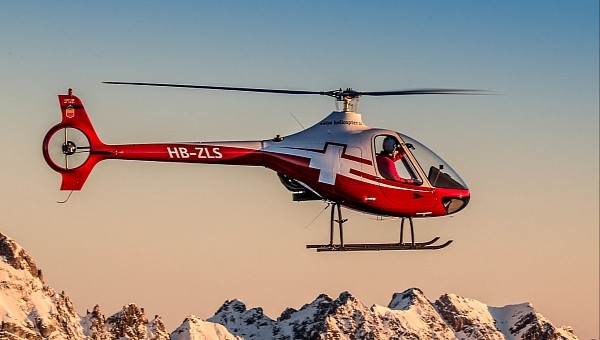Everybody wants a fresh start in the new year, and in the case of Swiss Helicopters, it’s a strong one. The helicopter operator officially became the first airline in Switzerland to offer passenger flights that are CO2-neutral, combining two ways of getting there.
Is green the new travel trend? Behind the PR strategies that praise eco-friendly “innovations,” companies in the industry claim that customers are the ones demanding these eco-friendlier alternatives, even if they could end up being reflected in higher costs.
This is also what apparently drove this Swiss airline to take the lead in green operations. As of this month, it will perform all of its passenger flights with CO2 neutrality. And no, it hasn’t ditched its conventional rotorcraft for some brand-new aircraft that don’t burn fossil fuel. The solution was twofold. On one hand, it replaced conventional fuel with SAF (sustainable aviation fuel) and, on the other hand, it started using carbon credits.
SAF is no longer a newcomer in commercial or military aviation. It’s been researched for years, and now it’s slowly starting to be used for regular operations. It comes in various types, all of them produced sustainably, from sources such as used cooking oil or biological raw material. It has been demonstrated to burn with fewer emissions, and it helps reduce the amounts of CO2 in the atmosphere through the entire production cycle.
Although it’s unanimously believed that this green jet fuel is the best solution available right now for commercial flights, SAF is still not widely available, and therefore not exactly cheap. Plus, regulations still limit its use as a drop-in fuel (meaning that no alterations to the engine are required) to 50% for existing aircraft.
Things are expected to change in the future, when 100% SAF-powered flights will be available. Until then, one of the other solutions that’s becoming increasingly common is the use of so-called carbon credits.
Simply put, companies that are responsible for carbon emissions buy carbon offsets to compensate for that. This is done by using the money paid for those credits to fund the green projects of various suppliers, which theoretically will remove the same amount of CO2 that was initially put out in the atmosphere. In the case of Swiss Helicopters, its carbon credit partner is the German company Carbonfuture, which collaborates with several companies specializing in air carbon capture.
This way, by combining the use of sustainable fuel with carbon credits/offsets, the Swiss helicopter operator can claim CO2-neutrality for its passenger flights, for both private and corporate customers. It sounds like a practical answer to the current sustainability dilemma, and perhaps other operators will follow the lead and also come up with similar approaches.
This is also what apparently drove this Swiss airline to take the lead in green operations. As of this month, it will perform all of its passenger flights with CO2 neutrality. And no, it hasn’t ditched its conventional rotorcraft for some brand-new aircraft that don’t burn fossil fuel. The solution was twofold. On one hand, it replaced conventional fuel with SAF (sustainable aviation fuel) and, on the other hand, it started using carbon credits.
SAF is no longer a newcomer in commercial or military aviation. It’s been researched for years, and now it’s slowly starting to be used for regular operations. It comes in various types, all of them produced sustainably, from sources such as used cooking oil or biological raw material. It has been demonstrated to burn with fewer emissions, and it helps reduce the amounts of CO2 in the atmosphere through the entire production cycle.
Although it’s unanimously believed that this green jet fuel is the best solution available right now for commercial flights, SAF is still not widely available, and therefore not exactly cheap. Plus, regulations still limit its use as a drop-in fuel (meaning that no alterations to the engine are required) to 50% for existing aircraft.
Things are expected to change in the future, when 100% SAF-powered flights will be available. Until then, one of the other solutions that’s becoming increasingly common is the use of so-called carbon credits.
Simply put, companies that are responsible for carbon emissions buy carbon offsets to compensate for that. This is done by using the money paid for those credits to fund the green projects of various suppliers, which theoretically will remove the same amount of CO2 that was initially put out in the atmosphere. In the case of Swiss Helicopters, its carbon credit partner is the German company Carbonfuture, which collaborates with several companies specializing in air carbon capture.
This way, by combining the use of sustainable fuel with carbon credits/offsets, the Swiss helicopter operator can claim CO2-neutrality for its passenger flights, for both private and corporate customers. It sounds like a practical answer to the current sustainability dilemma, and perhaps other operators will follow the lead and also come up with similar approaches.







